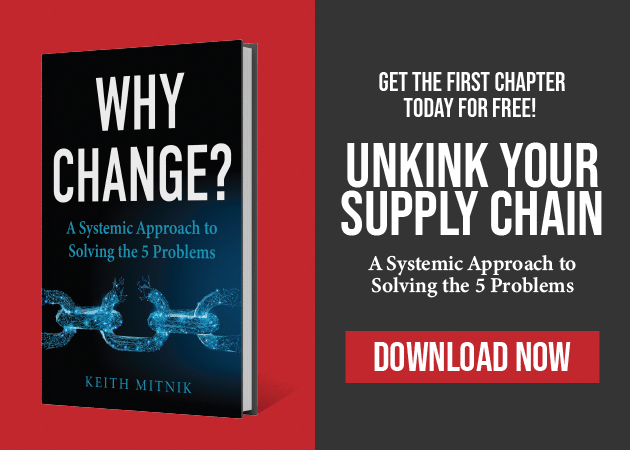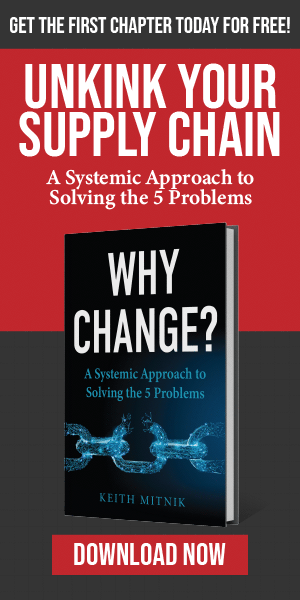
When most entrepreneurs talk about how they’ve achieved growth, they usually discuss customer acquisition. But when I’m asked this question, my answer is very different. I credit something else with my company’s growth: selectivity with our clients. In fact, we’ve turned down 90% of potential clients, and said yes to only 10%. Here’s how this counterintuitive approach has helped us and our customers thrive.
The Importance Of The Right Fit
While building our business, my partner and I realized that the key to stable long-term relationships is the same in business as it is in our personal life: finding the right fit. In order to bring top-tier service to the customer group we knew we’d serve best, we realized that any clients outside of this top ten would dilute our focus and distract us from doing our best work with our core clients.
We also knew that we had to manage our supply chain in the same exact way and would only work with manufacturers who were the right fit for us as well. To this day, we still keep our business focused like this, and continue to refer out roughly nine out of 10 of the potential customers who contact us. That’s how important a good fit is to us.
Giving Time & Quality To Ideal Clients
Many business owners are afraid to turn down potential clients because it means turning down potential revenue. But this mindset is rooted in misconceptions, the main one being that every customer you accept will be not only a good fit but also profitable for you. The reality is quite different (and of course this assumes profitability is most important to your business, rather than straight revenue).
Many organizations today create both buyer personas and negative buyer personas when they’re working on their marketing because they understand that a company cannot serve everyone. You have to know which clientele you can serve best while also recognizing the clientele that you’re either not equipped to serve and/or will not be able to work well with for one reason or another.
In my business, we take this much further and amend the 80/20 rule (which states that 80% of your profit comes from only 20% of your customers). In the real world, the ratio is worse, closer to 200% of your profit coming from 20% of your customers. When you break that down, it means that you are losing money on most of your clients. It may be hard to tell at first, but once you factor in all of the company overhead costs correctly, you can see this result.
Saying no to 90% of our incoming potential clients has meant that we can deliver first-class service to the mid-volume industrial product manufacturers we know we’re designed to serve. We create and design parts to their standard. We modify parts for them. We build for them. If we took on the other clients, we wouldn’t have the time to devote to these ideal clients, which means their products would suffer - and so would our retention and revenue. In addition to reducing the value to our most profitable clients, by saying yes to everybody we bring in clients that also cost us money - as they are not all profitable.
This approach may sound harsh, and nobody likes the word “no.” But in our practice, our “no” is a referral to a few other businesses that we trust that would be happy to take them on as a client. This is easy to do and helps the client as well as the other businesses. Better yet, we don’t have the distraction and damaging effects that come with force-fitting a customer - and everybody wins.
Alignment Across the Buyer Journey
If you’re looking to start going all-in for the top 10% of your customers, it’s important to also focus on achieving alignment in the business areas that matter most. For example, in our LCD business, we have to make sure we align with our clients first on technology and volume. If we cannot support a customer with the type of display technology they need, there’s no reason to take the conversation any further.
We also must make sure we’re a match on volume. If someone in our industry only needed to buy five units, they should work with a stocking distributor, while someone who needed to buy ten million units should work with a large fabricator. My company is designed to be the right fit for customers who need to buy units in the mid-volume range of a minimum of five to ten thousand units a year.
Depending on your business and industry, you’ll have your specific qualifying criteria that make you and a client a good match - or not. If a client doesn’t align with your business across the buyer journey, or your business can’t satisfy that client, cut ties early. It might feel strange to turn down business at first, but all parties involved will be better off if you part ways and leave yourself the opportunity to find other partners who are a better fit.
When you and your clients are well aligned, you’re fully prepared to meet their needs, and then your conversations get easy (or at least, they shouldn’t be hard). You should feel good about the relationship and be confident in helping them navigate their process toward success. When all is said and done, your customer satisfaction, retention and profit will be in a much better position when you’re strategic enough to say no to the customers that just aren’t the best fit.







